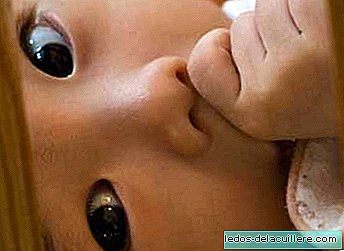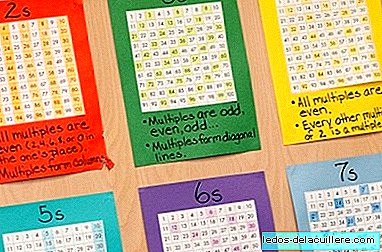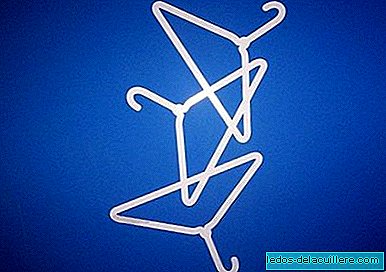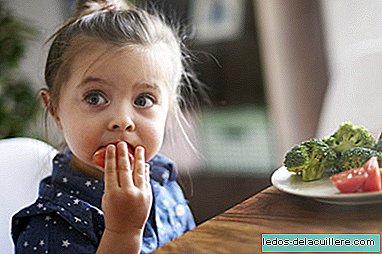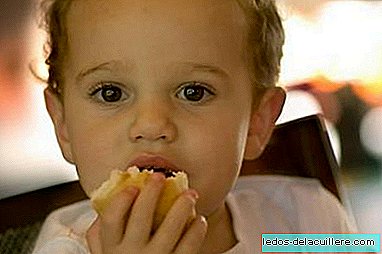
We continue with our Special on Infant Feeding focusing in this case on the Tips for making a healthy children's menu.
We will give you some recommendations that you must keep in mind for children to eat in a healthy and balanced way, with the right variety of foods to cover the nutrients they need during the day.
We have already talked about the distribution of meals throughout the day and now we will give some advice on what they should eat each day to have a complete diet.

To talk about healthy infant feeding, the first thing we should keep in mind is the daily infant feeding pyramid, which highlights the importance of taking five daily meals and the food groups that each one must contain.
Meals and food groups
He breakfast It is one of the most important meals because it provides the energy needed to face the day. It should cover between 25 and 30 percent of the daily nutritional needs. Must include cereals, fruit and dairy.
He lunch or snack Mid-morning should be a light meal such as a snack, a yogurt or a fruit.
The food Noon is the most important of the day in terms of quantity and variety of food. It should cover between 35 percent of the nutritional needs and should be composed of a first plate of rice, pasta, legumes or salad and a second plate of meat, poultry, fish or eggs accompanied by vegetables or potatoes.
If the meal is accompanied with bread, one or two slices, and better whole wheat bread. From dessert, a piece of fruit or some homemade dessert.
The snack It can consist of a fruit, whole or in juice, a yogurt or a sandwich of cheese or turkey meat.
The Dinner You should supplement the food, but it should be light, to facilitate rest. You can offer purees, creams of vegetables, soups, rice with vegetables, salads, or a light dish of meat, fish or poultry accompanied by vegetables.
Daily calories by age
The calories that a child should eat vary according to age, weight, sex and level of physical activity. As in adults, not all 3-year-olds, for example, need to eat the same amount of daily calories.
Keep in mind that the recommendations are usually high and that each child has to self-regulate their own need for food, that is, how much they want to eat, without being obsessed with counting the calories we offer them.
The caloric needs of children are very variable, you can see it in these two tables according to ages.

Source Butte (2000)

Source FAO / WHO / UNU. Energy and protein needs. Technical reports series 724. WHO, Geneva 1985
Other recommendations
In addition to taking into account the caloric needs and the type of food they should eat at each time of the day, there are other recommendations equally important that must be taken into account when preparing a healthy children's menu, for example:
Do five meals a day: it is preferable to make portions with less amount of food than few too abundant meals.
Five daily servings of fruit and vegetables: both accompaniment and dessert, at breakfast and snacks you have to try to introduce the 5 daily rations. It may seem like a lot, but we talk about portions. One or two fruits a day (depending on size), a salad, a portion of vegetables and a fruit juice already make up the five portions.
Prefer fresh food and homemade. Avoid processed foods, industrial pastries, etc.
Don't forget the nuts and seeds, always taking into account their age of introduction in infant feeding, never before two years.
Use olive oil to cook food, avoid oils of another origin.
Avoid the Saturated fats, found in whole dairy products, cakes, buns, fatty meats and sausages.
Increase the foods rich in complex carbohydrates, rich in fiber and reduce the consumption of sugars and sweets.
When preparing food, cook them grilled or baked, steamed or boiled vegetables, and decreases the consumption of fried foods.
Decrease the consumption of Salt (in children under one year avoid it) and increase the consumption of Water instead of sugary drinks. A water consumption of between 50-60 ml is recommended for each kilo of weight.
In the variety and fun There is the taste. Try to offer all kinds of food for the child to experiment and remember that an attractive dish in colors and textures greatly facilitates the acceptance of new foods.
Finally, don't forget the exercise. Performing physical activity is essential to complement a healthy diet. Exercise in childhood is extremely important for healthy development. The child has to move every day to avoid sedentary lifestyle and reduce the risk of childhood obesity.



